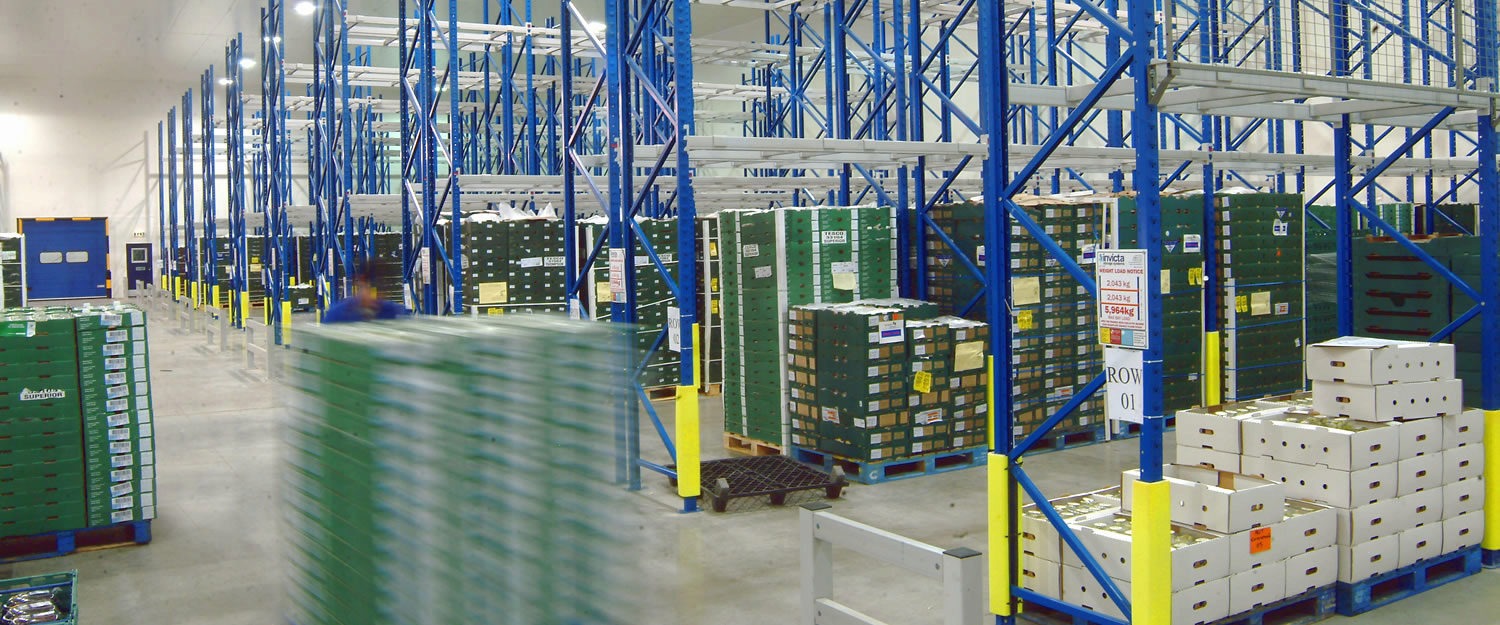For your information
You are being redirected to one of our divisional subsites which contains more detailed information on the required division. To navigate back to the main Invicta Group site, please click the link found in the footer at the bottom of the page.
What union action says about warehouse conditions
18th November 2022
Quick Quote
Contact Mick Coyne
To get a quotation or arrange a free site survey - Call Mick Coyne on
-
 UK
UK
Current location:
Quick Quote
Contact Mick Coyne
-
 UK
UK
Current location:
The visibility of unions may be at its highest point since the 1970s. While the power of unions across much of the world has been significantly diminished, notable wins by unions such as Starbucks Workers United and the Amazon Labor Union are inspiring a wave of collective action. Many businesses have reacted to this with terror, and gone to great and preemptive lengths to quell any talk of unionisation.
While unions may not be to the taste of many businesses, their sudden resurgence reflects issues that are deeply embedded in many industries, and arguably society at large. For the warehousing and logistics industry – the new standard-bearer for this movement – there are some hard truths that need to be recognised quickly. Doing so could not only help to avoid radical action, but also benefit both businesses and employees in the long run.
Rise and fall
While unions continue to hold some degree of power in many countries, they have been cowed in recent years, and nowhere more so than the United States. Having spearheaded legislation around racial and gender equality and key labour reforms in the early 20th century, the latter half of the century saw a decline in union membership. As of 2020, around 10.8% of workers in the U.S. belonged to a union.
While many public sector organisations still have strong and active unions, private companies managed to exert enough pressure to prevent them from forming, or to see them disbanded. Today, the majority of union members are in the public sector, are older men, and are concentrated in just seven states. Most of these jobs are ‘white collar’, though this is an increasing labour pool, with the loss of manufacturing and mining leading to fewer ‘blue collar’ jobs.
Having been seriously diminished since the days of Reagan and Thatcher, the past few years had seen a quiet resurgence in union influence. The election of Joe Biden in particular promised to be a boon for unions and workers as a whole, with the President promising to be “most pro-union president leading the most pro-union administration in American history.” While those promises may have fallen short so far, there can be no doubt that unions are having a moment – as epitomised by the cases of Starbucks and Amazon.
Workers unite
While union sentiments had been steadily growing for some time, the pandemic was the catalyst for a dramatic spike in activity. Starbucks had typically been an industry leader in employee perks, something which had driven its unique rise to fame (the company owns most of its 9000 stores in the USA). But employees became disillusioned with the company’s lax attitude to mask-wearing during the pandemic, and staff shortages that prevented many employees from even taking toilet breaks. A union vote in Buffalo, Texas quickly formed a movement that has spread to over 50 stores nationwide.
The success of unions at Starbucks – a company with traditionally strong benefits – was soon followed up by unionisation at Amazon. Where Starbucks had dissuaded people from joining unions by exceeding industry standards, Amazon has been accused of falling below them. The recent deaths of six workers – killed when a tornado struck their warehouse in Illinois – have only exacerbated questions about working conditions, and the pressures on employees to meet high quotas and high expectations, rain or shine.
A New York Times report not only alleged that employees had frequently been short-changed in their paychecks, but that the company deliberately made them work harder so that they would leave early, and let fresher recruits take their place. According to the article, this stemmed from a belief by former CEO Jeff Bezos that employee performance diminished as wages increased. By making it so that nobody would want to work for more than three years, performance could supposedly be maintained without increasing wage expenditure.
The warehouse perspective
This is an extreme example, and one that should be taken with a grain of salt. But evidence does suggest that Amazon’s warehouses have a particularly high rate of turnover. Indeed, most warehouses do. Another recent report shows that, at a time of severe labour shortages in the UK warehousing industry, half of all employees feel undervalued by their employers, despite a healthy 60% wanting to stay in the position long-term. With many businesses already struggling to recruit enough workers, this suggests a disconnect between how difficult and taxing the job is perceived to be, and how tough it actually is.
The pandemic has not just put things into perspective for many people, but also transformed the way many of us work. Remote working is a viable prospect for millions of people, far from the physical, on-site labour and long hours typical of many warehouse roles. While this isn’t something that the industry will ever be able to change, it is fighting an increasingly difficult battle to draw people in, and offer the job satisfaction – and career progression – that younger workers are looking for.
So how best to achieve this? An obvious point is not to directly oppose unions, as any efforts to do so will tend to be uncovered, and add fuel to the fire. Instead, warehouse operators should start to think about the benefits they can offer, and how they can meet the challenges that are driving the current labour crisis. What’s clear is that this needs to go beyond company FitBits or snazzy breakrooms, and towards changes which make a genuine and tangible impact on people’s working and private lives. Employees should not just want to come to work, but have the freedom to enjoy themselves outside of it.
Industrial action
For warehouses, this starts with reducing the burden of physical labour. An obvious – if expensive – way to achieve this is to introduce elements of automation. From autonomous mobile vehicles to more full-blown robotics, automation in its present form is a great way to support human workers in their roles. The ability to take on much of the physical work can expedite things and replace some of the human component – addressing your staff shortages and making things more comfortable for your employees.
Another approach is to change how and when people work. Oftentimes, the negative effects of manual labour accumulate over time. Consecutive long shifts cause small injuries and strains to become exacerbated, and lead to bigger complications, affecting people both in and out of work. By changing shift patterns to space out people’s shifts a bit more, you can improve people’s quality of life. While this may require you to hire more, it should also increase productivity, making up for some of this shortfall.
You may also look to find efficiencies elsewhere in order to better remunerate employees. Changes to your warehouse such as higher density pallet racking, multi-tier racking or a warehouse mezzanine floor can all create additional space, either for storage or other uses. At a time when additional warehouse space is at a premium, finding new space in your existing premises can allow you to continue to grow and expand without having to divert resources. This can allow you to raise standards in parallel – or use that new space to create better facilities that support your employees, whether that’s quiet rooms or even on-site daycare.
Above all of this, though, you need to listen to employees. This starts by giving people the opportunity to speak and be heard, something that sounds easy, but often doesn’t happen in practice. There are many reasons why people can feel uncomfortable speaking up about issues, or unable to do so, including the perceived threat of losing their jobs or being discriminated against in some way. Giving people safe avenues to make suggestions and provide honest feedback will not only allow you to better address their needs – and keep them for the long term – but also create a working culture that attracts new recruits to the business.
–
Unions need not be a boogeyman for businesses of any kind, but it should be remembered that they fundamentally exist to improve the lot of employees who feel in some way unrecognised or unrewarded. By preempting the demands of unions and improving the lives of your employees, you can create a working environment where people feel valued and content – improving their output and your reputation.
Accreditations & Affiliations







Start your project
Tell us about your project. Please complete this form. One of our sales team will come back to you with more details. If you prefer, you can drop us an email.




Share/Like this page